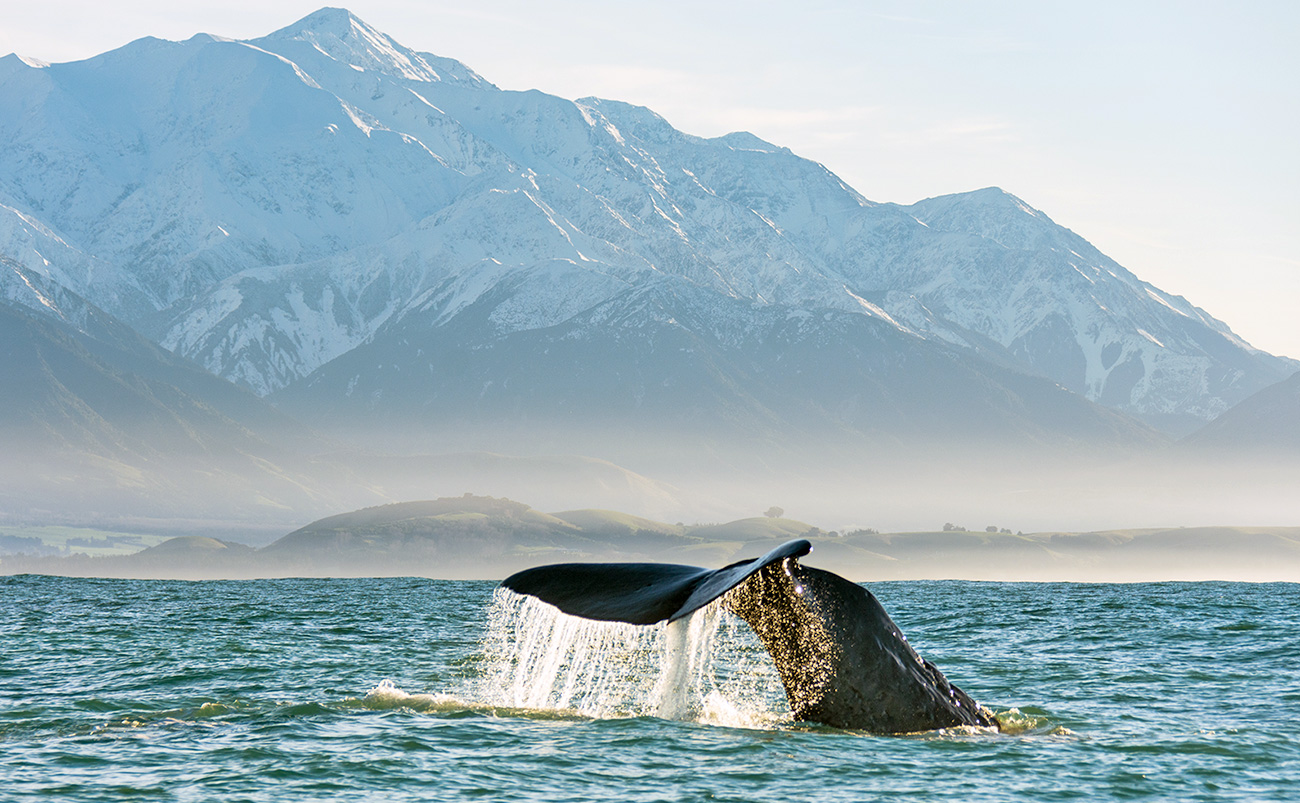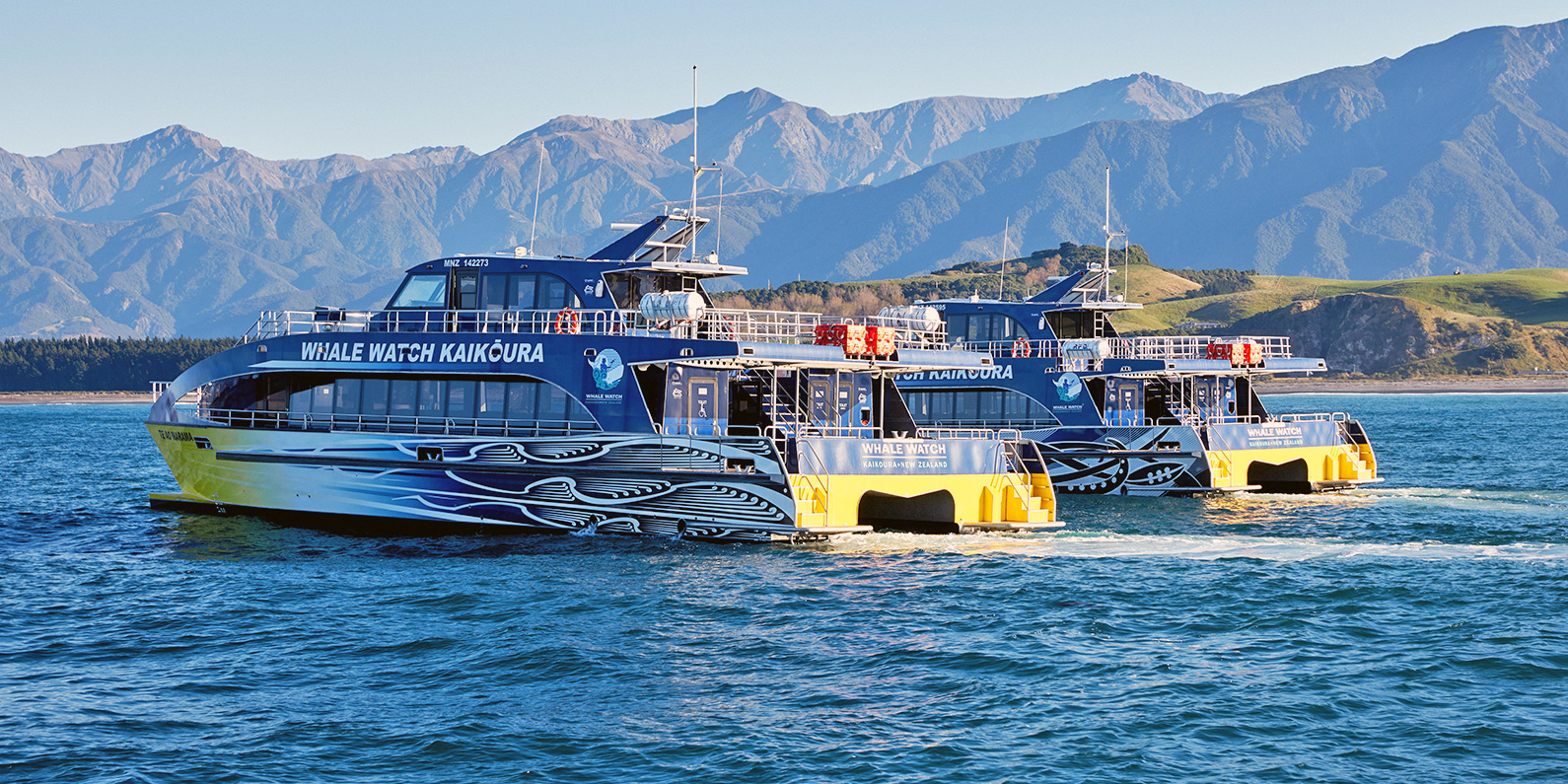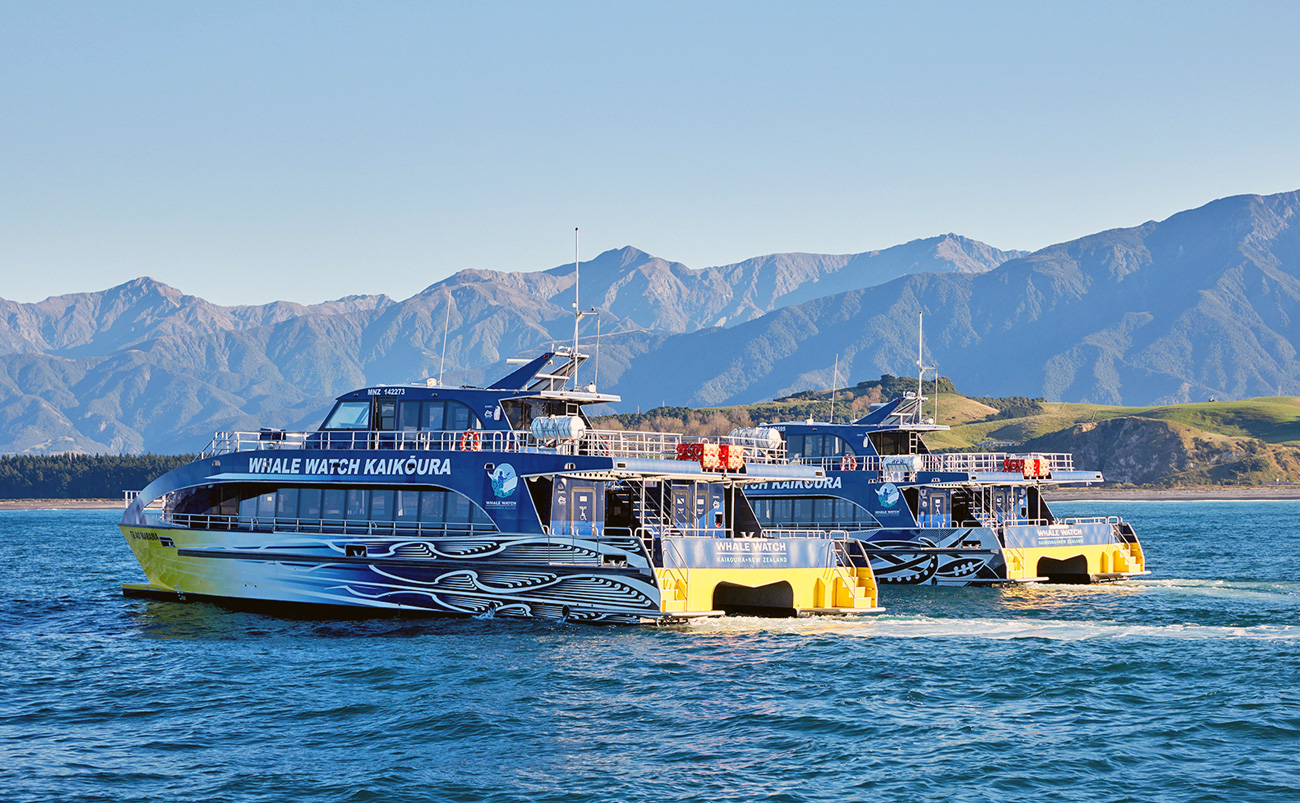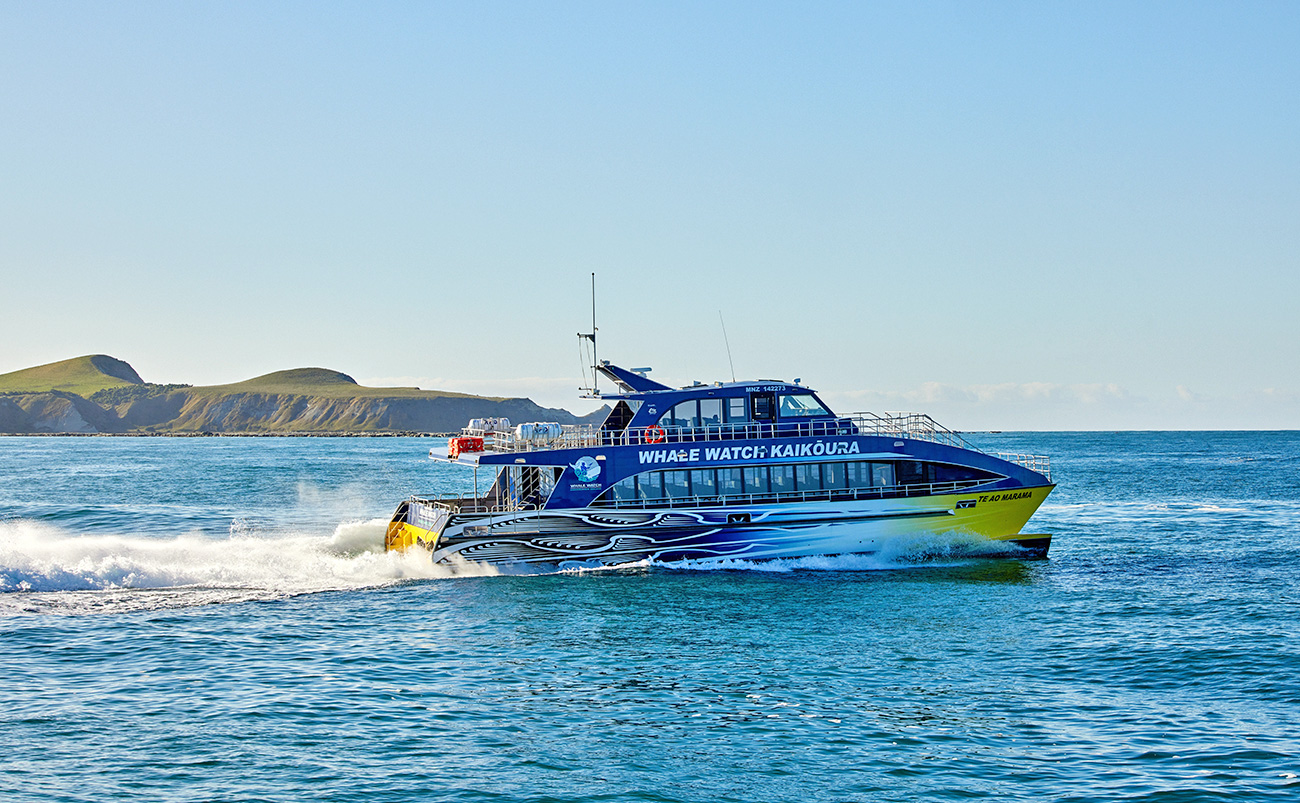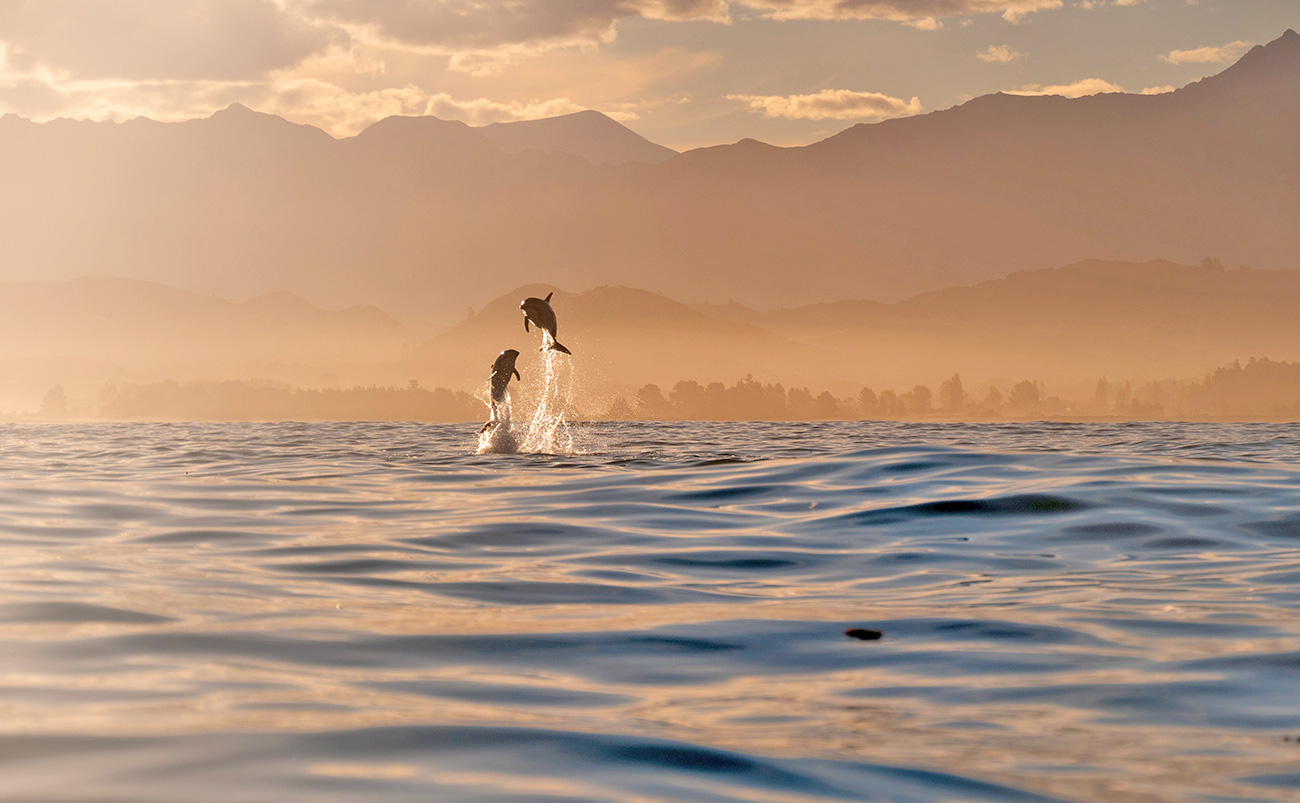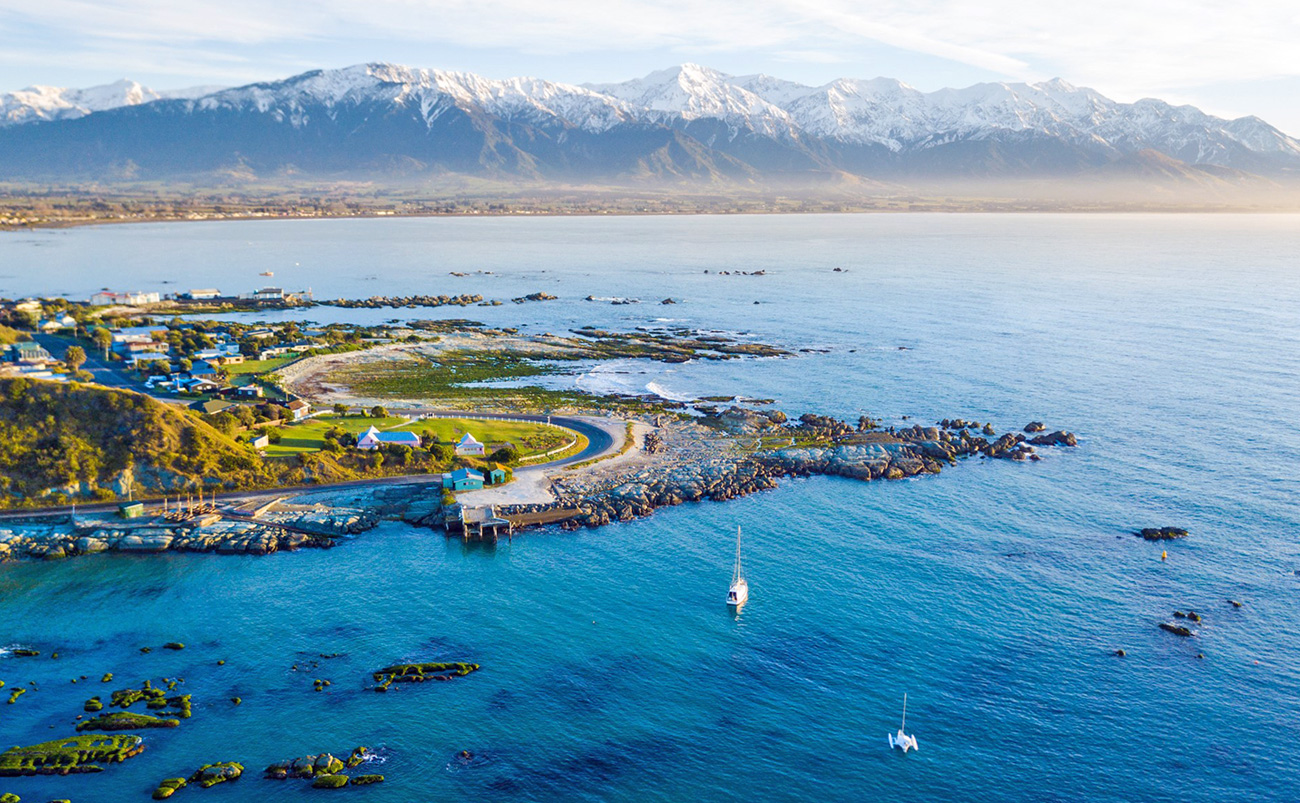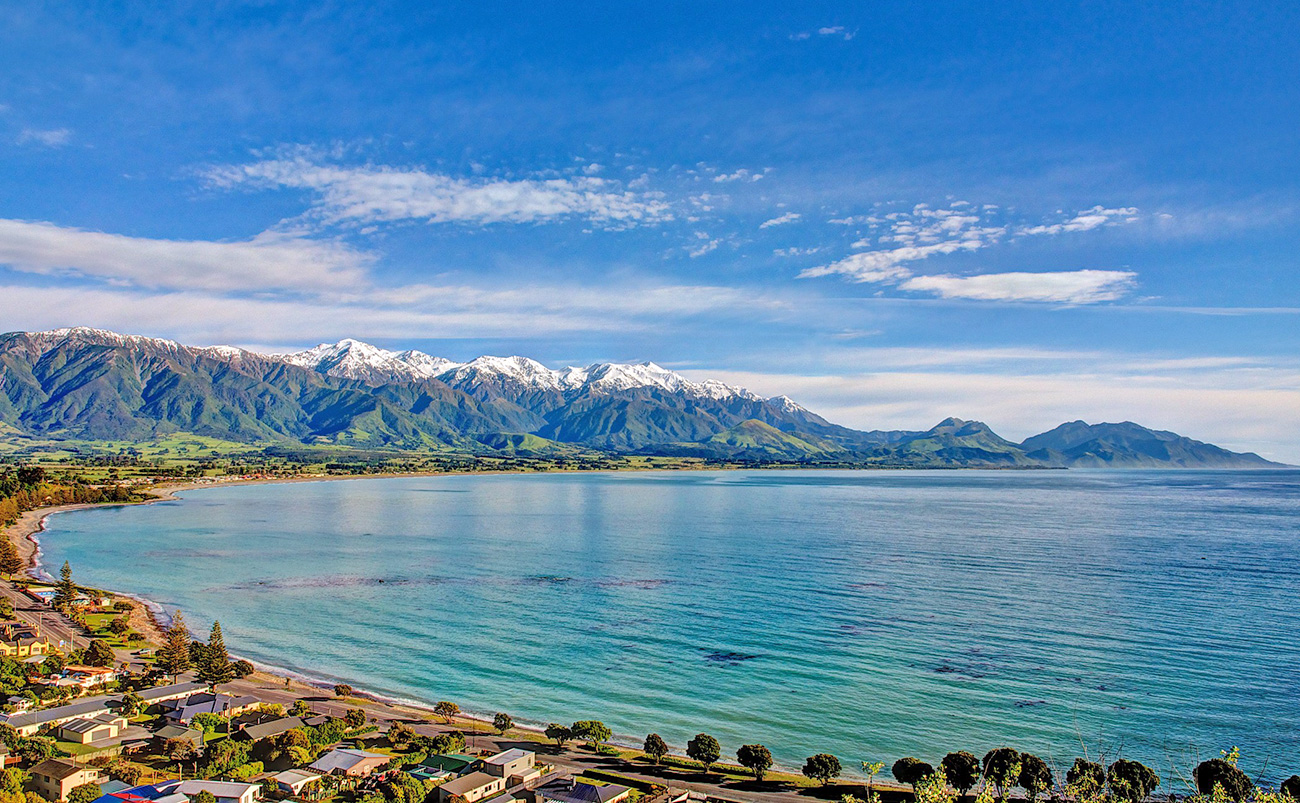The seaside settlement of Kaikoura, situated midway between Christchurch and Picton on the rugged east coast of New Zealand’s South Island, is overlooked by majestic mountains, which are snow-capped for many months of the year. This unique combination of ocean and mountains offers stunning coastal alpine scenery and a host of eco-tourism oriented activities, including Whale watching, Dolphin swimming, walks, and much more!
Table of Contents
Why Visit Kaikoura
Whether you are looking for relaxation, nature, excitement, art, history and culture, or fine wines and cuisine, Kaikoura offers it all. Accommodation is extensive, ranging from backpackers and holiday parks to bed & breakfast, motels and lodges.
With a population of approximately 3,200 residents, the Kaikoura township is located on a rocky peninsula, protruding from lush farmland beneath the mountains. In the waters off the peninsula, a complex marine system provides an abundantly rich habitat for marine mammals and seabirds making it an ideal place for getting ‘close to nature’.
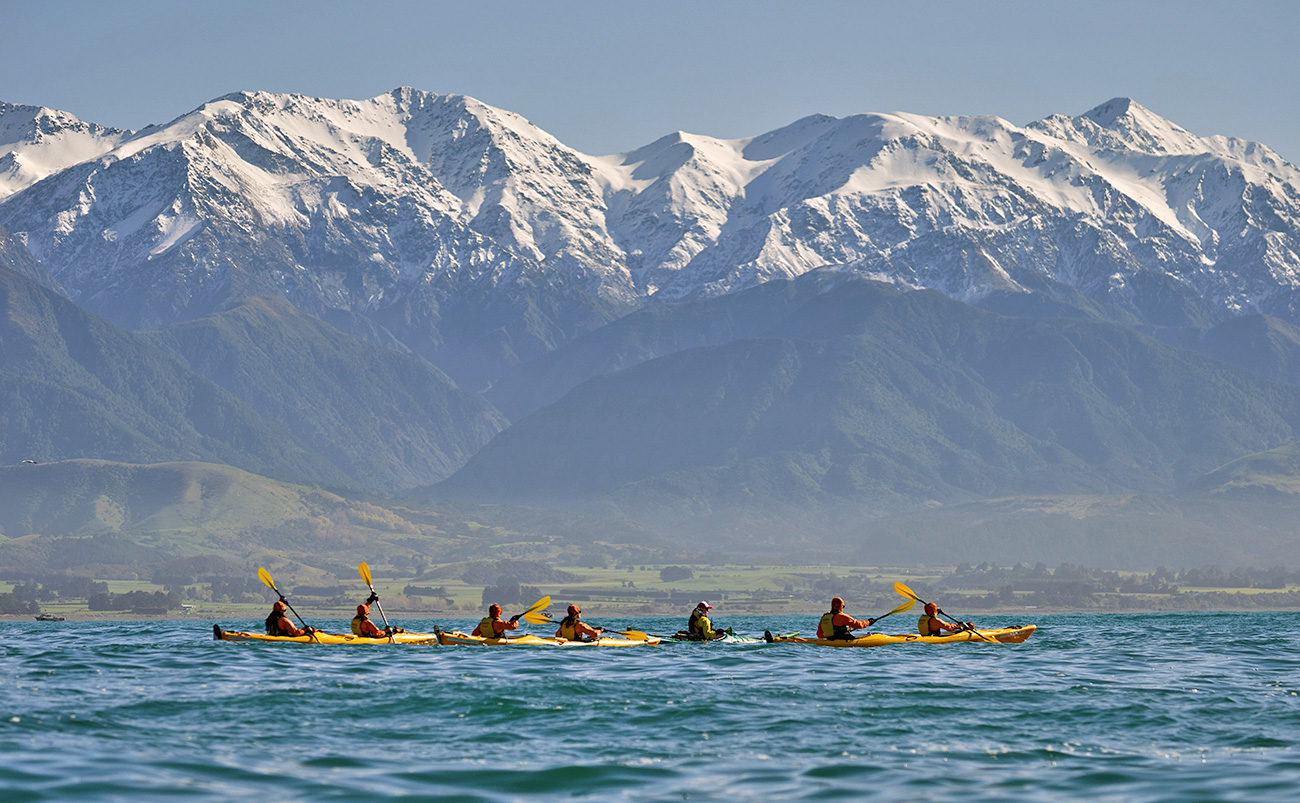
History
A town with it’s own fasinating history, archaeological remains indicate that Moa Hunters inhabited the peninsula 900 years ago. In Maori legend, Maui placed his foot on the Kaikoura peninsula to steady himself while he ‘fished-up’ the North Island. The Maori name Kaikoura translates to ‘meal of crayfish’ (Kai – food, koura – crayfish), and it is crayfish for which the region has traditionally been famous. The area’s abundant food sources attracted Maori settlement, and the remains of several pa sites can still seen on the peninsula to this day.
In 1770 Captain Cook first discovered the Kaikoura peninsula, believing it to be an island. The first shore whaling station was established in 1843, located near where Fyffe House still stands today. Other whaling stations soon followed, and at one stage the industry employed over one hundred men in the Kaikoura district alone. Whale numbers steadily declined after 1850 and the exportation of them became un-economic, leading whalers to turn to alternative means of existence, such as farming. Whaling continued sporadically until as recently as 1964 when the last of NZ’ s whaling operations ceased.
Today, the emphasis in Kaikoura is the conservation of marine life, working with a sustainable tourist industry which allows visitors from all over the world to appreciate life in the ocean. In 1978, the Marine Mammal Protection Act was finally passed, providing total protection to New Zealand’ s whales, dolphins and seals. Kaikoura lies within the Southern Hemisphere Whale Sanctuary.
Wildlife
Several different species of whale can be seen off Kaikoura at different times of the year, but almost always the huge Sperm Whales. Flukes lifting clear at the start of the deep dive, adolescent male Sperm Whales enjoy the rich diet of the Kaikoura waters while building up their strength to move to the mating grounds of the warm north. Regularly diving to depths of one kilometre, Sperm Whales have been known to dive to 3 kilometres, holding their breath for up to two hours – perhaps gulping down a few groper or wrestling with a giant squid.
The clean sharp fin of the Orca is often sighted in Kaikoura, and schools of Pilot Whales are occasional visitors. And everywhere the fun loving Dusky Dolphin. Fur seals, once almost hunted to extinction are now plentiful here, resting on warm rocks after a nights fishing. Seabirds, also enjoying the rich sea harvest, are abundant.
